There are many insects and pests that can invade and cause damage to your lawn all throughout the year. While some will only cause minimal aesthetic damage, others may be carrying diseases that are harmful to pets and humans. That is why it is so important to be informed of the different bugs and insects that could be nestling into your lawn and what damage they might cause. This will help you take the right steps toward curative treatments.
Here are the 7 most common insects that may be living in your lawn in Iowa.
1. Grubs
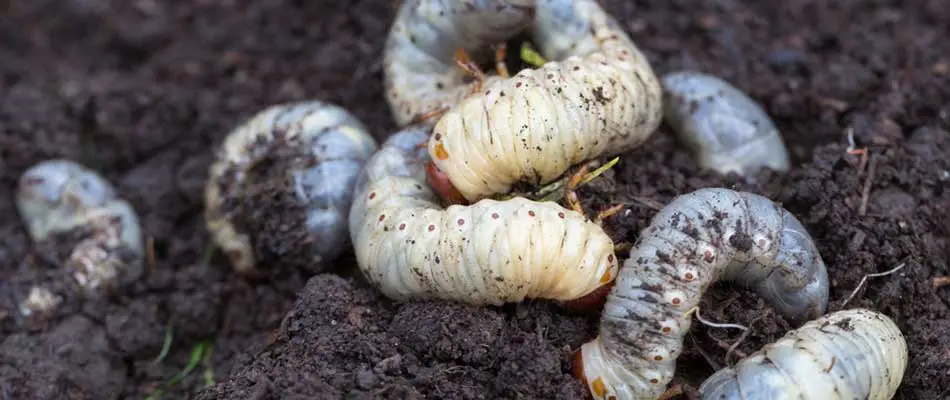
Grubs are the larvae of several beetles. These c-shaped worms are white in color and they cause damage by feeding on the roots of your grass. Two of the most telling signs that you have grubs on your lawn are when the turf feels sponge-like underneath your feet and when you can easily lift your grass away from the soil. These two things happen because grubs have eaten away at your roots, thus detaching your grass from your soil.
Because grubs are such a large issue and cause such extensive damage, most professional lawn care companies provide both curative and preventative grub control treatments.
2. Chinch Bugs

Chinch bugs are very small, only measuring 3/16 of an inch. Their bodies are black while their front wings are white. They can also be identified by the hourglass shape that is seen on their backs.
Chinch bugs suck the moisture out of your grass blades, turning them yellow and causing irregular patches all over your lawn. Normally, insects like ants and ladybugs can help get rid of chinch bugs. However, if your area is experiencing abnormal heat or drought, this might impact the number of beneficial insects that eat chinch bugs. In this case, it is smart to use professional treatments to get rid of your chinch bug problem.
3. Aphids
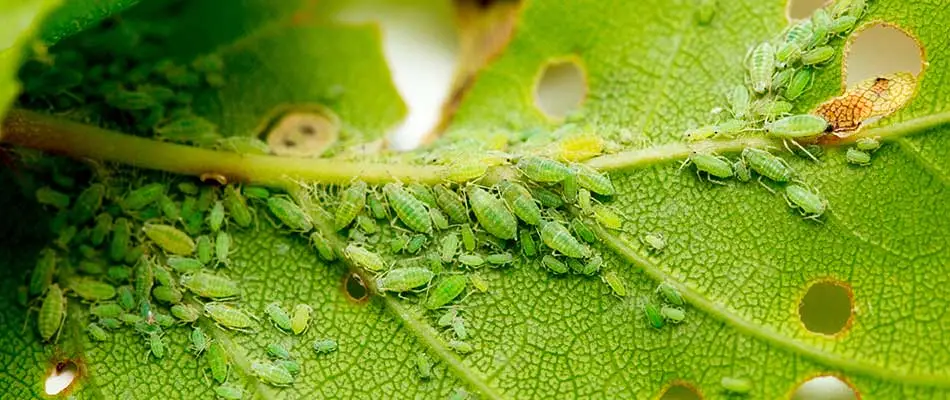
It can be very hard to spot aphids because they are quite small. There are a variety of species that have different colors, ranging from yellow, gray, light green, black, and brown.
If aphids grow in number on your lawn, it will cause your plants to grow improperly. These insects secrete a very sweet liquid called "honeydew" that will turn into mold and can attract other insects like ants. Sign up for aphid treatments to prevent this damage.
4. Sod Webworms
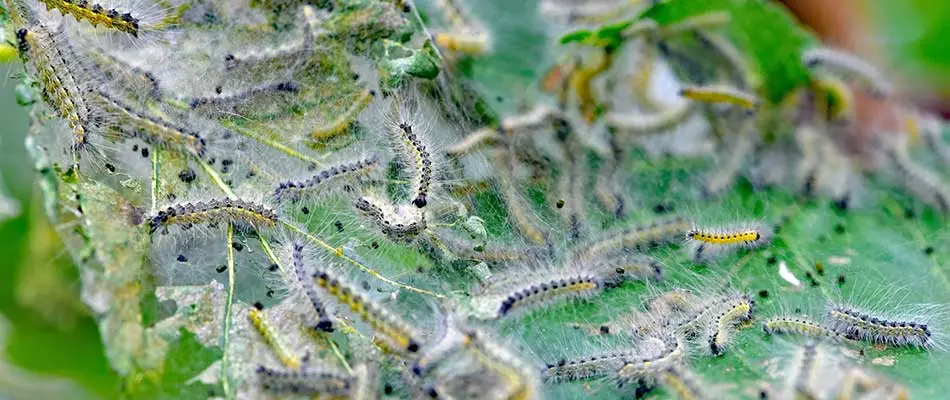
Sod webworms are the larvae of the sod webworm moth. While the moth will not damage your lawn, its larvae like to feed on your grass blades, leading to ragged spots all over your turf. They have a gray/tan color and will only grow up to an inch long. It is best to apply preventative sod webworm treatments in the early spring months before they hatch in late April or May.
5. Japanese Beetles
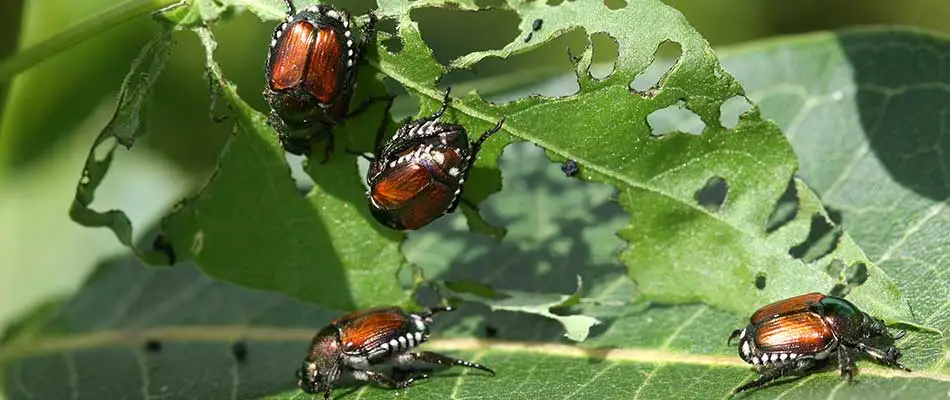
They may look beautiful with their iridescent brown and green color, but you won't think that anymore once they start munching on your leaves, leaving holes all over. Japanese beetles are very destructive insects because they attack plants both as a larva and as an adult. The adult beetle eats your foliage as well as fruits and flowers, particularly roses, geraniums, and Japanese maples. One way to prevent them is to take care of them in their larvae stage, also known as a preventative grub control treatment.
Installing plants that Japanese beetles don't like, such as holly and lilac, may keep them away from your lawn.
6. Ticks

Ticks are parasites that will not do harm to your lawn or landscape. However, they can harm your pets or even you. According to the Iowa Department of Natural Resources, deer ticks, lone star ticks, and dog ticks are the most common ones found in Iowa. While some tick bites are harmless, others will cause rashes or even Lyme disease.
Ticks are small in size but they grow after feeding. Their colors can include brown, reddish-brown, and black. To prevent them, it is best to sign up for a professional tick control treatment that includes multiple applications throughout their peak season.
7. Moles
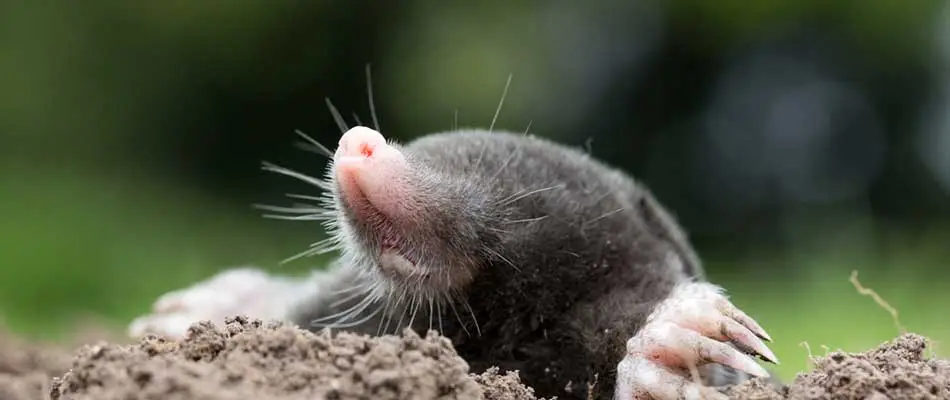
A mole's main source of food is actually the insects found underneath the ground. Even though they may not be eating your grass or other plants, they can still cause extensive damage. Moles like to burrow and create tunnels while searching for their food. They can be relentless in their burrowing, with one mole able to burrow 18 feet in just one hour. This can cause extensive damage to your lawn, which is why it is important to contact a professional team like ours as soon as you notice the damage. Repellants, baiting, and environment modification are all treatment options.
8. Voles

Do not be deceived by their somewhat cute appearance! These mouse-like rodents have a chestnut-brown and black color and they can grow up to 7 inches long. They can cause damage to your grass by eating the roots and creating "runways" all over your lawn. Similar to moles, repellants, baiting, and environment modifications are all treatment options.
Other effective techniques that are used to get rid of voles include regular mowing, fencing, and traps.
Worried about insects invading your lawn? Call (515) 289-2020 for our insect control services.
Whether you have seen any of the above insects on your lawn or you want to get ahead of the game and prevent them from invading your property, we can help you. At A+ Lawn & Landscape, we have different lawn insect control treatments for all the common insects that can be found in Des Moines, West Des Moines, Ankeny and surrounding areas in Iowa.
Our team has more than 30 years of experience in this industry and we can assure you of quality service. Call (515) 289-2020 to get an estimate for your lawn insect control service. We can set up the right treatment to ensure that your lawn is protected from these invasive insects.


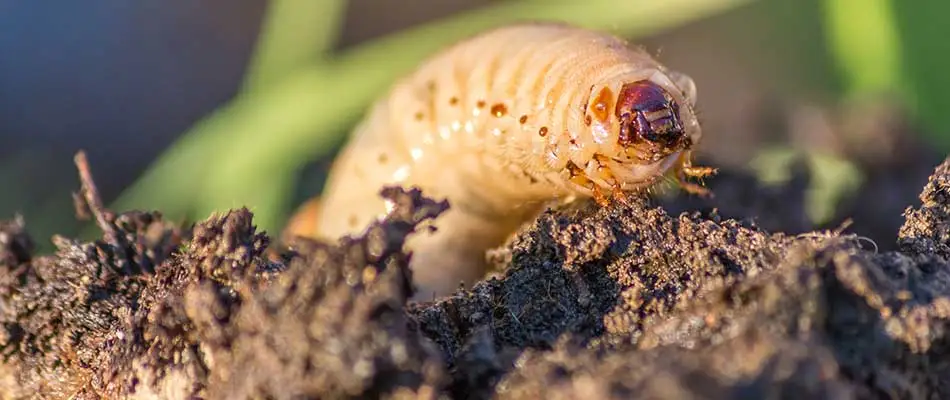


Comments (0)
Thanks for your comment!
Thanks for your feedback! Your comments have been successfully submitted! Please note, all comments require admin approval prior to display.
Error submitting comment!
There is a problem with your comment, please see below and try again.